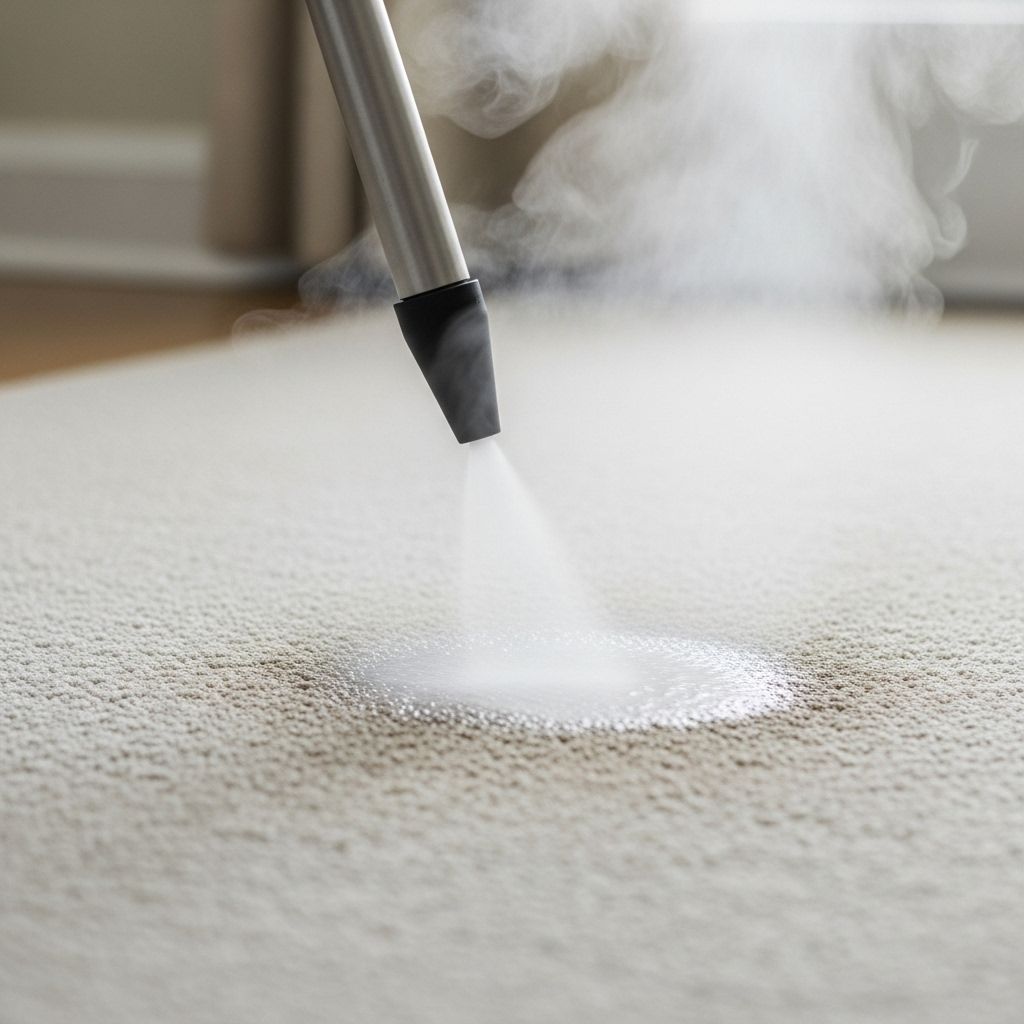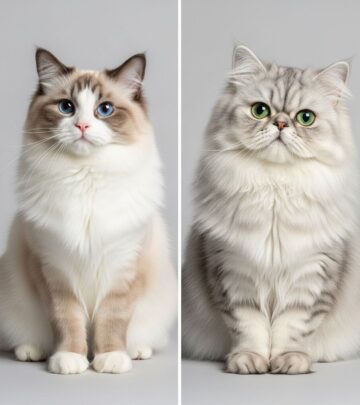Will Steam Cleaning Remove Cat Urine Smell in Carpet?
Learn why steam cleaning alone may worsen cat urine odors and discover proven techniques to fully eliminate persistent pet stains and smells from carpets.

If you share your home with cats, you’re likely familiar with the frustration of discovering a urine accident in your carpet. Cat urine doesn’t just leave behind a stain; it creates an unpleasant, persistent odor that can linger for weeks or even months. One common question pet owners have is whether steam cleaning alone will remove the cat urine smell from carpet. In this article, we’ll explore the science behind cat urine odors, examine the effectiveness of steam cleaning, discuss alternative cleaning methods, and provide a complete, step-by-step guide for getting your carpet truly clean and odor-free.
Understanding Why Cat Urine Odor Is So Difficult to Remove
Before addressing cleaning methods, let’s look at why cat urine odors are so stubborn. Cat urine is more concentrated than that of many other animals — it contains uric acid, creatinine, urea, pheromones, and bacteria. When a cat urinates on carpet, some of these compounds bind to fibers and even seep down into the carpet padding and floor beneath. As the urine dries:
- Uric acid forms crystals and salts that are highly water-insoluble and bond tightly to fibers.
- Bacteria decompose the urine and produce ammonia and other foul-smelling compounds.
- Humidity can reactivate old, dried urine, refreshing its unpleasant odor.
This unique chemical profile makes cat urine odor especially persistent. Simply cleaning the surface or masking it with fragrances rarely achieves true odor removal.
Does Steam Cleaning Actually Remove Cat Urine Odor?
Steam cleaning, also called hot water extraction, is a common method for deep-cleaning carpets. The process involves using a machine to inject hot water (sometimes with detergent) under pressure, then extracting it back out. While this is effective for most dirt and some stains, it does not reliably eliminate cat urine odor for several reasons:
- Heat can worsen odor: The high temperatures can set the urine stain and odor by bonding proteins to carpet fibers.
- Steam spreads the urine: Instead of lifting it completely, steam can push the urine crystals and residues deeper into the carpet and padding.
- Enzymatic action is missing: Standard steam cleaners do not break down uric acid crystals, which are highly resistant to water and most detergents.
In many cases, after steam cleaning, the urine smell may temporarily fade while the carpet is wet — but as it dries, the odor often returns, sometimes even stronger than before.
Why Steam Cleaning May Make Cat Urine Problems Worse
Carpet cleaning professionals and pet odor experts caution against using steam cleaners on urine stains. Here’s why:
- Heat ‘sets’ the stain: Just like with some dyes or proteins, heat from steam can permanently bond urine compounds (especially uric acid) to carpet fibers.
- Deeper penetration: The pressure of steam can drive urine salts and bacteria further down, making future removal far more difficult.
- Ammonia reactivation: Steam may temporarily mask the smell, but dried urine salts (hydrophilic) can reabsorb moisture from the air and renew the odor.
Therefore, pet experts generally do not recommend steam cleaning as the primary solution for cat urine stains — except as a follow-up step after odor-neutralizing treatments have been used and the urine is already broken down.
What Methods Truly Remove Cat Urine Odor?
To fully eliminate the smell of cat urine from carpet, it’s essential to use products and techniques that remove both the stain and the underlying odor-causing compounds. Here are the most effective strategies, according to cleaning experts and pet professionals:
1. Enzymatic Cleaners: The Gold Standard
Enzyme-based cleaners, specifically designed for pet stains, are typically the most effective products. They work by breaking down uric acid, bacteria, and organic matter at a molecular level, rendering them odorless. Key tips for effective use:
- Blot up as much urine as possible before applying any cleaner. Use clean towels and press gently to avoid spreading the stain.
- Apply enzymatic cleaner generously — saturate the entire stained area, including a border around it, to account for spreading.
- Let it sit long enough. For light stains, 15 minutes may work, but for deeply soiled areas, cover with a damp cloth and let sit for 12–24 hours.
- Repeat as needed. Several treatments may be necessary for old or stubborn stains.
The result is usually a complete neutralization of the odor and stain if directions are followed closely.
2. Carpet Cleaners With Appropriate Solutions
- Some carpet-cleaning machines are equipped with pet-specific solution options designed to target and eliminate urine odors.
- For deep set stains, use a carpet cleaner only after you’ve finished enzymatic treatment and the carpet is dry.
- Never use steam heat as the primary step; use extraction or shampooing with cool water and the right solutions.
3. DIY and Home Remedies—What Works, What Doesn’t
Certain home treatments may help in a pinch:
- Vinegar and baking soda: Vinegar can help neutralize the ammonia smell temporarily, and baking soda absorbs some odor. However, these remedies rarely remove uric acid crystals.
- Do not use strong perfumes or ammonia-based cleaners: Ammonia may attract cats back to the same spot and masks rather than removes the odor.
For persistent odors, always favor dedicated pet enzyme solutions over household remedies.
Step-By-Step Guide: How to Fully Remove Cat Urine Odor from Carpet
Here is a field-tested approach for eliminating cat urine from your carpet and preventing its return:
- Act Fast: The sooner you address the accident, the less likely the odor will become permanent.
- Blot, Don’t Rub: Use paper towels or clean cloths to gently blot the urine. Avoid scrubbing or rubbing, as this can spread the stain deeper.
- Apply an Enzymatic Cleaner: Pick a pet enzyme cleaner and saturate the area (including the underlying pad if possible). Let it sit as directed.
- Let the Product Work: For best results, cover the area with a damp cloth and let enzymes break down organic matter for up to 24 hours.
- Blot Up the Excess: After allow time, gently blot any moisture remaining in the carpet.
- Air Dry Completely: Allow carpet to air dry thoroughly before walking on it or cleaning again. A fan can speed up the process.
- Repeat as Needed: For stubborn stains and smells, you may need to repeat the process multiple times.
- Finish with Gentle Carpet Cleaning: Only after odor is eliminated, use a carpet cleaner with a pet-specific solution if needed for final cleaning.
Common Mistakes to Avoid When Cleaning Cat Urine
- Don’t use steam or hot water before enzymatic cleaning: This can set the stain and make odor removal much harder.
- Don’t scrub or soak with excess water: Aggressive scrubbing or puddling water can spread the urine into the pad and subfloor, or distort carpet fibers.
- Don’t mask with fragrance alone: Scented sprays or powders may temporarily hide odor, but cats’ sensitive noses will still find the original spot.
How to Prevent Repeat Offenses and Re-Marking
Even after complete cleanup, some cats are drawn back to previously soiled areas. To minimize repeat accidents:
- Remove all traces of odor by using enzyme treatments until the area is completely neutralized.
- Discourage revisiting by covering spots with furniture or using pet deterrent mats once clean.
- Address behavioral or medical issues if accidents are frequent — consult a veterinarian to rule out urinary problems.
- Use additional deterrents such as motion-activated sprays or smells cats dislike, for particularly stubborn locations.
Professional Cleaning: When to Call in Experts
In severe cases — such as repeated accidents, large-volume stains, or when the urine has penetrated subfloor layers — standard home cleaning may not suffice. Professional carpet cleaning services have specialized tools and solutions specifically designed for deep pet odor removal:
- They can pull up carpet and padding if necessary to treat the underlying floor.
- Some use water extraction units with urine treatment agents and drying equipment that exceed typical rental machines.
- Professional knowledge prevents further damage from improper steam use or chemical application.
If home methods fail or the smell persists after repeated cleaning, seeking a professional evaluation is advisable.
Frequently Asked Questions (FAQs)
Q: Why does cat urine smell linger, even after cleaning?
A: Cat urine contains chemicals, especially uric acid crystals, that bond tightly to carpet fibers and are not removed by standard cleaning. Incomplete cleaning or using hot water/steam can set these compounds rather than remove them.
Q: Can I use a regular carpet shampooer to remove cat urine?
A: Regular carpet shampooers may help with surface stains, but they do not break down uric acid or bacteria responsible for the odor. For best results, use enzyme treatments first, then a carpet cleaner if needed.
Q: Are there any home remedies to try if I don’t have an enzyme cleaner?
A: You can try blotting with a vinegar and water mix, followed by baking soda to absorb odors. However, these methods rarely provide complete, permanent removal for cat urine. Dedicated enzyme cleaners are recommended for full results.
Q: Will steam cleaning remove cat urine from hardwood floors?
A: Steam cleaning is not recommended for hardwood because it can drive urine deeper into seams and damage the finish. Use blotting and enzymatic cleaners designed for wood surfaces.
Q: How can I prevent my cat from peeing on the carpet again?
A: Fully remove all odor, provide enough clean litter boxes, address any health or behavioral issues, and use deterrents on problem spots as needed.
Quick Reference Table: Cat Urine Odor Removal Methods
| Method | Effectiveness | Best For | Warnings |
|---|---|---|---|
| Enzymatic Cleaner | Very High | Fresh/Old stains, repeated spots | Needs time to fully work |
| Steam Cleaning | Low (alone) | General cleaning after odor removal | Can set stain/odor if used first |
| Vinegar/Baking Soda | Moderate | Light fresh stains, home remedy | Does not remove uric acid crystals |
| Professional Cleaning | Very High | Severe, old, deep stains | Costly; requires professional |
Summary: The Best Way to Eliminate Cat Urine Odor from Carpet
While steam cleaning has its place for general carpet refreshing, it is not the answer to cat urine odor removal — and in some cases, it can leave you with a worse problem than you started with. The best, most effective approach is to use a quality enzyme-based cleaner following best practices: act quickly, blot carefully, saturate thoroughly, and repeat until the odor is completely gone. For persistent or severe problems, consult a carpet-cleaning professional familiar with pet odor issues. Odor-free carpets are possible — with patience, the right tools, and the correct cleaning process.
Read full bio of medha deb












